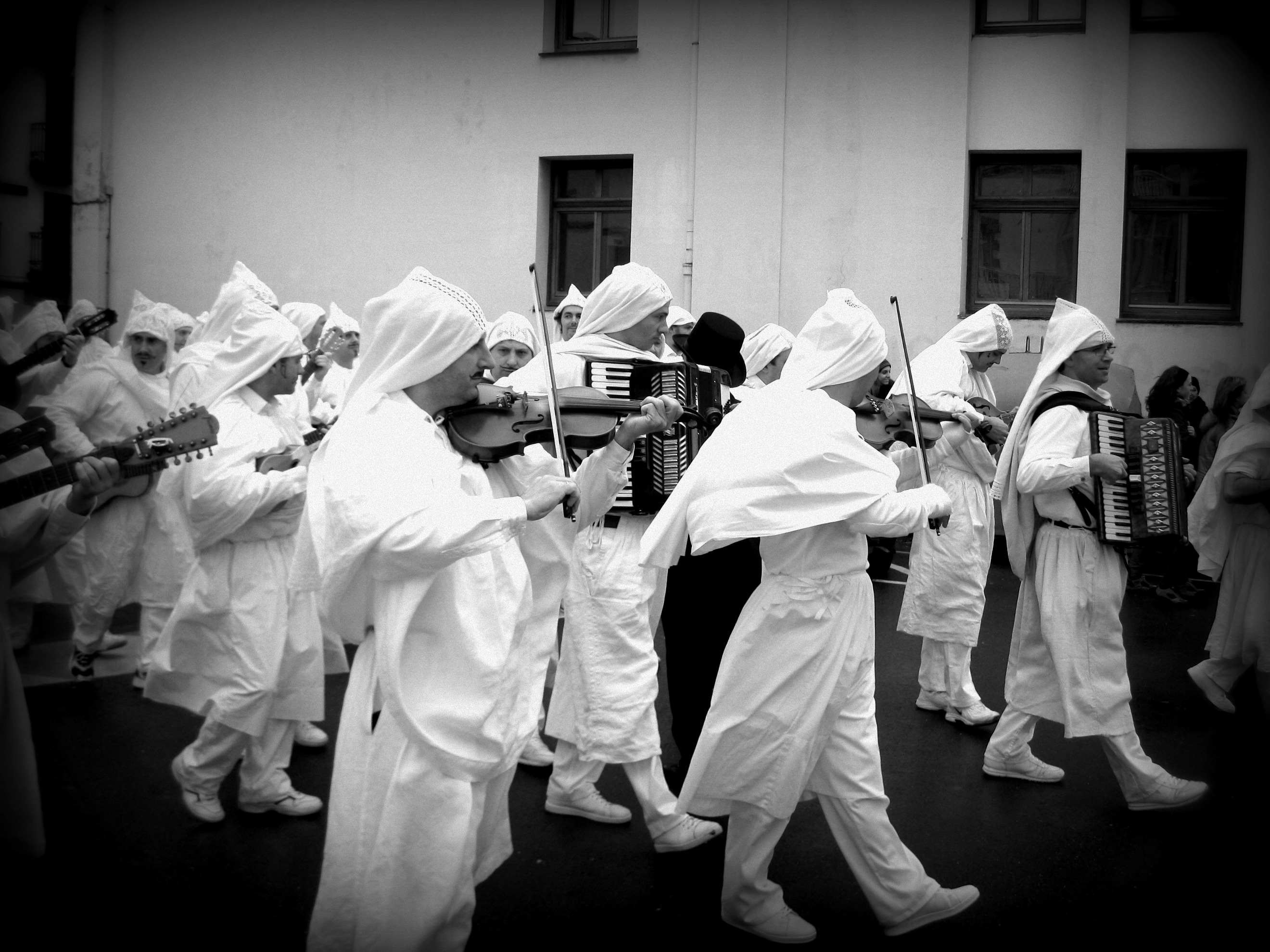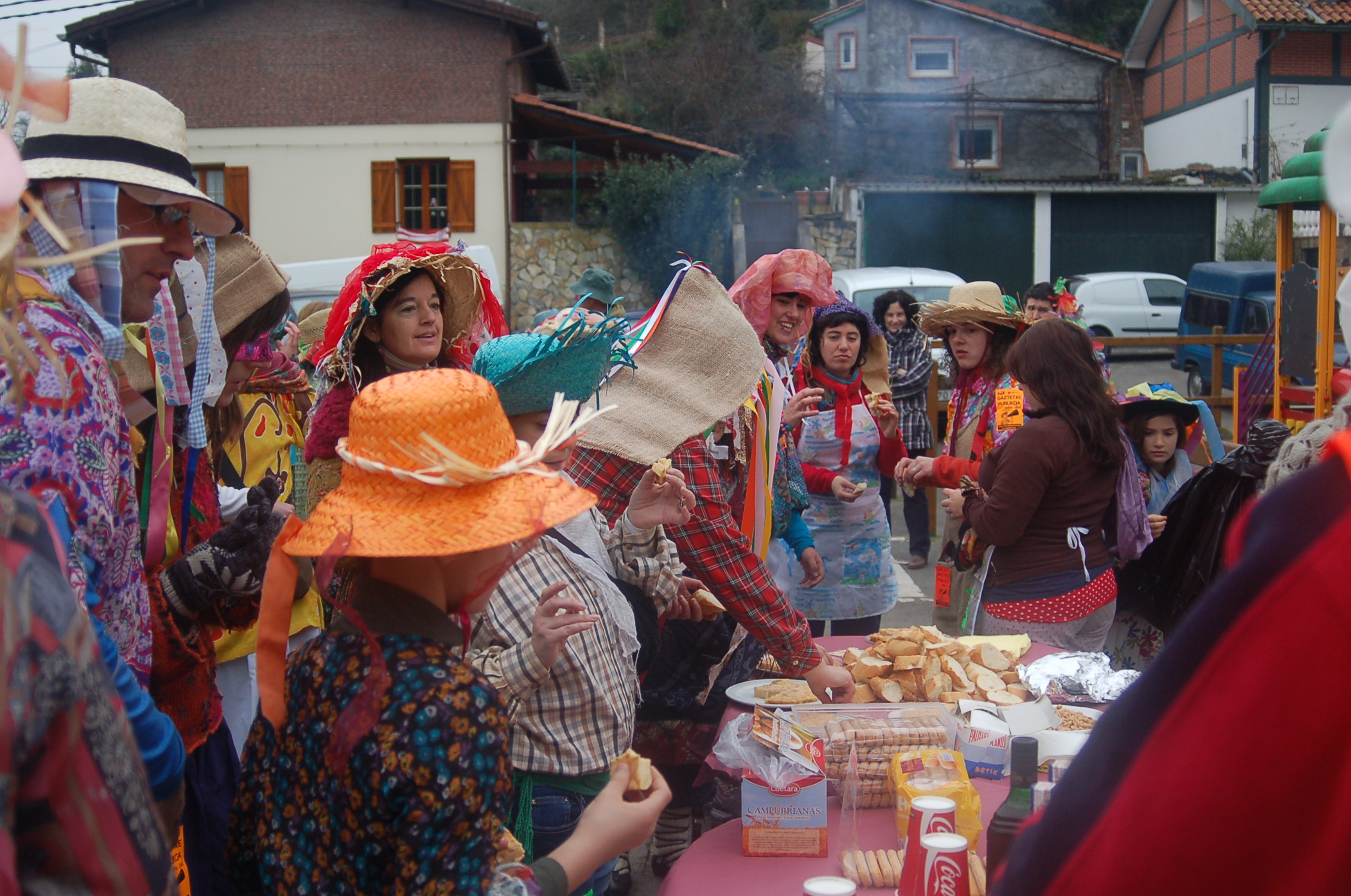Basque ethnography at a glance

Atorrak, Mundaka (Bizkaia), 2011. Labayru Fundazioa Photographic Archive.
In olden times indulging in carnival celebrations when Lent observance is in full flow would have been totally unacceptable and considered serious misconduct. Nowadays, though, in some localities carnival events are postponed to the weekend after Shrove Tuesday.
Carnival usually refers to the three days previous to Ash Wednesday, the day when fun and enjoyment come to an end. Formerly, carnival was indeed a time of licence and excess to rejoice and even subvert authority in a permissible way before the long Lenten period of fasting and penance. It was a cheerful and festive period for children and adults to engage in house-visiting wassail and appeal for traditional tasty tostadas (sweetened milk-soaked bread).
However, rather than limiting its significance, we should perhaps talk about the carnival cycle in a much broader sense. In fact, the carnival season has no set date in the calendar. In Uitzi (Larraun-Nafarroa), for instance, festivities start on the first weekend after Epiphany. Later on in the year the festival of the wet nurses and shepherds (inudeak eta artzainak) takes place in Donostia, and echoes of the bells of the joaldunak in Ituren and Zubieta (Nafarroa) announce that party time is coming to every corner of Euskal Herria.
Carnival practices in some towns and villages are highly popular traditions celebrated passionately and with excitement, even under Franco’s dictatorship. The carnival festival of Tolosa (Gipuzkoa), the atorrak feast in the coastal town of Mundaka and Lantz Carnival are some of the most renowned. There are places, in contrast, where carnival time past by almost unnoticeably, with no fuss other than the use of homemade face masks by children. Those masks, let us add, were believed to stick to one’s face for life, should they be worn on any other day than Shrove Tuesday.

Carnival in Trapagaran (Bizkaia), 2013. Labayru Fundazioa Photographic Archive.
In some locations renewed and reinforced carnival rituals have risen from the ashes after years of slumber thanks to the recovery labour of cultural groups, dance ensembles and other social institutions. Such is the case in Trapagaran, Gernika, Durango, Altsasu… Besides, certain traditions have adapted to suit the times, as in Mundaka, where women dressed as lamiak join in the merriment since several decades.
After all, the above-mentioned variations confirm the fact that the carnival tradition is living heritage, alive, evolving and constantly redefining itself in the community.
Akaitze Kamiruaga – Popular Cultural Heritage Department – Labayru Fundazioa
Translated by Jaione Bilbao – Language Department – Labayru Fundazioa

